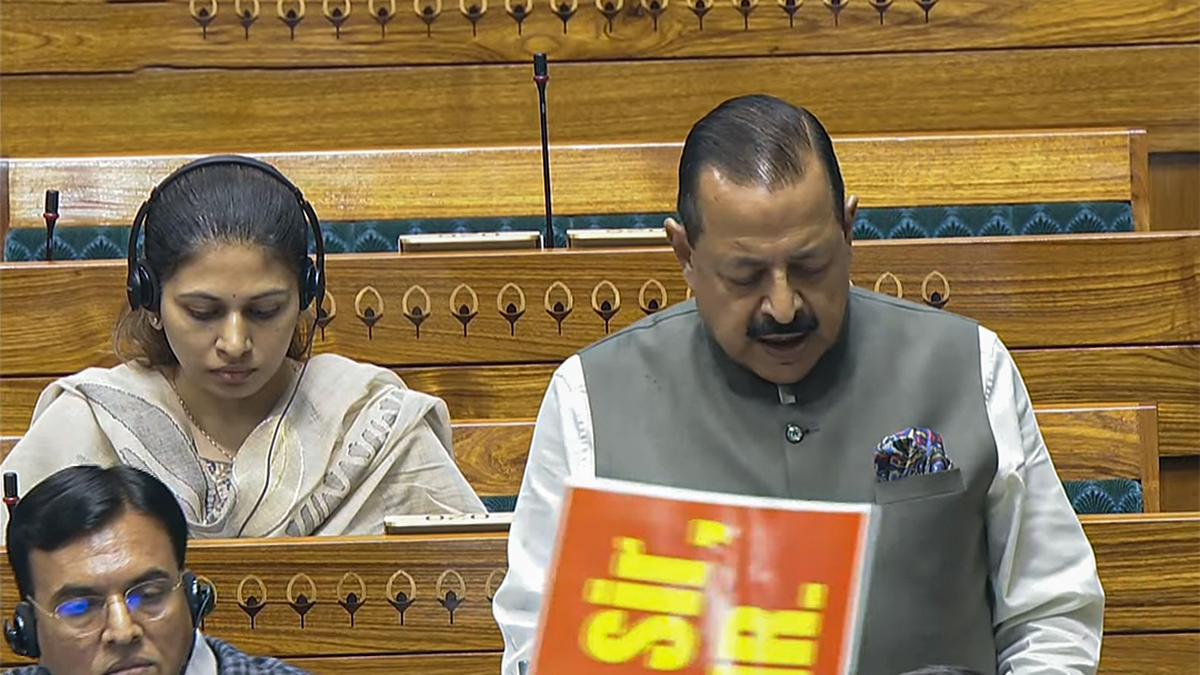Union Minister Jitendra Singh.
| Photo Credit: ANI
The Ministry of Earth Sciences (MoES) has constituted a committee, comprising members from various organisations, for “formulating a legal framework” pertaining to meteorological services in India and the role of agencies involved in it, Union Minister Jitendra Singh said in a written reply to a question in the Rajya Sabha on Thursday.
The move results from a long-standing mandate of the World Meteorological Organization (WMO), of which India is a member, requiring all member countries to develop a legislation/Act/policy for hydro-meteorological services. “The committee constituted by the MoES will take cognisance and examine the legislation carried out in this regard in other countries,” he said in his response.
Despite being the official source of monsoon forecasts, cyclone warnings, and all aspects involving weather, besides being entirely government-funded, there is no single law that defines the structure, function and responsibilities of the India Meteorological Department, which was established during the colonial period. It is currently a subsidiary under the MoES.
An MoES officer told The Hindu that though the IMD was the official agency for weather forecasts, there were organisations that issue their own forecasts, “causing confusion”. It was to prevent this that the WMO had required member countries to have a legally binding policy on disseminating weather advisories or forecasts, the officer added.
Over the years, there had been instances where monsoon forecasts issued by research organisations were at odds with those of the IMD and more recently, several private organisations too had begun disseminate their forecasts.
A statement on the WMO website said that national legal instruments ought to be defining the mission and mandate of the NMHS (National Meteorological and Hydrological Service) “to ensure clarity in the definition of their responsibilities and recognition of their contribution to society to facilitate allocation of adequate resources”.
The advantages of such a legal instrument, according to the WMO, are: duties and areas of responsibility of an NMHS being defined to benefit both the NMHS and the government; the NMHS is clearly designated as the “official” weather, climate and flood warning service and as the “National Authority” in warning situations, to avoid public confusion; ensuring legal protection of the field equipment and of officers in their duties; direct access to essential international communications; and coordination of various weather, climate, water and related environmental activities in the country.
Over half of the NMHSs operated by WMO members already have formal legal instruments (such as a law, Act, or decree) covering their responsibilities, establishment and operation of their facilities, state regulations, and legal responsibility. Other issues included in the legal instruments are the roles of NMHSs in the prevention and mitigation of natural disasters, international cooperation, and supplementary provisions and funding.
Published – July 24, 2025 09:20 pm IST

